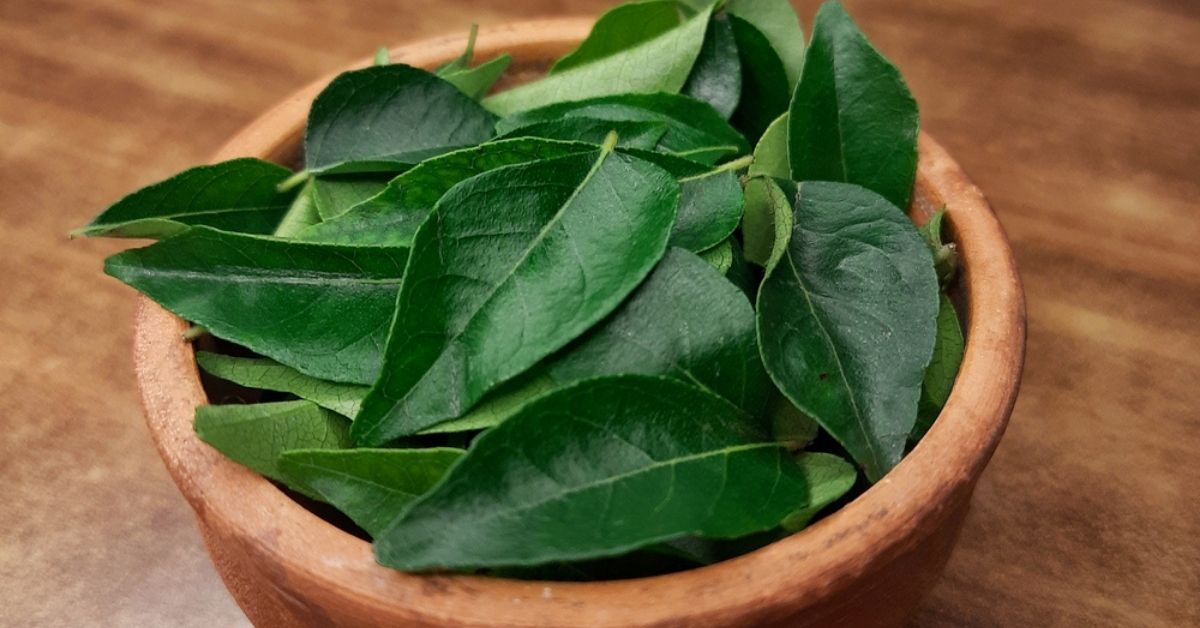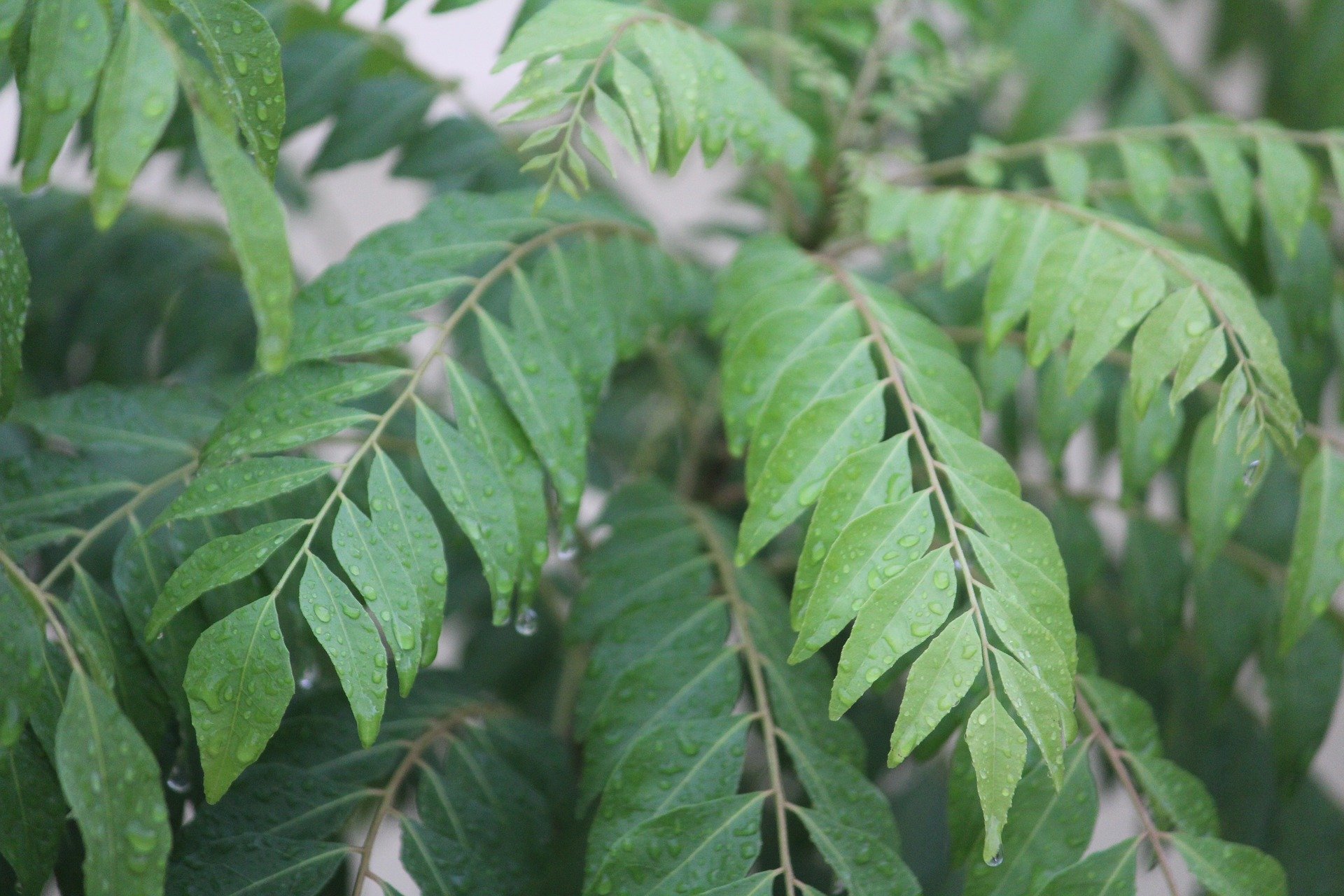Science Says Curry Leaves Could Help Your Body Lower Cholesterol & Blood Sugar
A popular herb in south India, did you know the humble curry leaves not only enhance flavour but also reduce risk of heart diseases, blood sugar, and cholesterol?

Indian cuisine has a complicated relationship with herbs. While some are purely medicinal, others are used in garnish or as aromatics and a few are versatile enough to serve all of these purposes. The humble and aromatic curry leaves belong to the fourth category encompassing a multitude of uses.
From being the star of sambar tadka that can make any dish look and smell exquisite to helping with gut issues, this flavour enhancing herb is extremely popular south of India.
Locally known as kadi patta in Marathi, karuveppilai in Tamil and karibevu in Kannada, these glossy elongated leaves are used for adding tadka to curries, to make chutneys or even a dry powder called podi served with rice.
Native to India and Sri Lanka, curry leaves are also recommended as a home remedy to cure gastrointestinal issues and reduce hair fall.

But did you know that according to scientific research it reduces blood sugar levels and lowers cholesterol levels? Here’s how.
Protective plant substances
Research shows that curry leaves are rich in alkaloids and phenolic compounds which are protective and potent health substances. The leaves are also rich in a variety of antioxidants which keep the body healthy and free from diseases.
The presence of various vitamins like vitamin A, B, C and E help in scavenging free radicals in the body and suppressing oxidative stress — a condition that usually leads to chronic diseases.
In 2014, a study was conducted among two groups of rats with medication-induced stomach damage. The group that received oral treatment with curry leaf extract showed no signs of oxidative stress, while the group that didn’t suffered alterations in their gastric tissues.
Consuming curry leaves regularly reduces risk factors like high cholesterol which can lead to heart-related diseases. Its property to reduce oxidative stress also contributes to this.
Another 12-week study among rats on a high-fat diet showed that regular consumption of curry leaf extract prevented diet-induced complications. This includes fat accumulation, inflammation and oxidative stress which can lead to heart diseases.
Managing Type 2 diabetes
Apart from being rich in antioxidants and vitamins, curry leaves are also packed with fibre which helps in slowing down digestion and prevents the food from metabolising quickly. This in turn keeps blood sugar in check and boosts insulin activity.
A 30-day study conducted on diabetic rats showed that oral administration of curry leaf extract lowered blood glucose levels. The same paper even mentions that curry leaf extract was more effective than a certain anti-diabetic drug.
Following this, several experiments were also conducted among 43 diabetic humans. The patients were given curry leaf powder in the morning and night which showed a significant decrease in blood sugar level between day one to day 30 of the study.
Not just this, this versatile wonder leaf also has anti-cancerous properties, antibacterial properties, pain-relieving properties and improves digestion.
If you’re wondering how to consume curry leaves regularly, here’s a simple recipe for you.
Curry leaf tea
Ingredients:
25 curry leaves
1 cup of water
Method:
Wash the curry leaves thoroughly.
In a pan, bring a cup of water to a boil and add the curry leaves.
After five minutes, take it off the heat and allow the leaves to steep.
Once the colour of the water changes, strain the leaves and drink the warm water.
As an optional addition, you can also add some lemon juice or honey to the liquid to enhance the flavour.
Note: This can be consumed on an empty stomach in the morning, at night before going to bed, or at both times.
Edited By Ananya Barua

Similar Story

8 Best Idli Places in Bengaluru Which Serve Extra Love For ‘Thatte Idlis’
Larger than the usual idlis and shaped like discs, the ‘thatte idlis’ of Bengaluru have a fan following of their own. Here are eight places in the city for idlis and other South Indian breakfast staples.
Read more >
If you found our stories insightful, informative, or even just enjoyable, we invite you to consider making a voluntary payment to support the work we do at The Better India. Your contribution helps us continue producing quality content that educates, inspires, and drives positive change.
Choose one of the payment options below for your contribution-
By paying for the stories you value, you directly contribute to sustaining our efforts focused on making a difference in the world. Together, let's ensure that impactful stories continue to be told and shared, enriching lives and communities alike.
Thank you for your support. Here are some frequently asked questions you might find helpful to know why you are contributing?


This story made me
-
97
-
121
-
89
-
167












